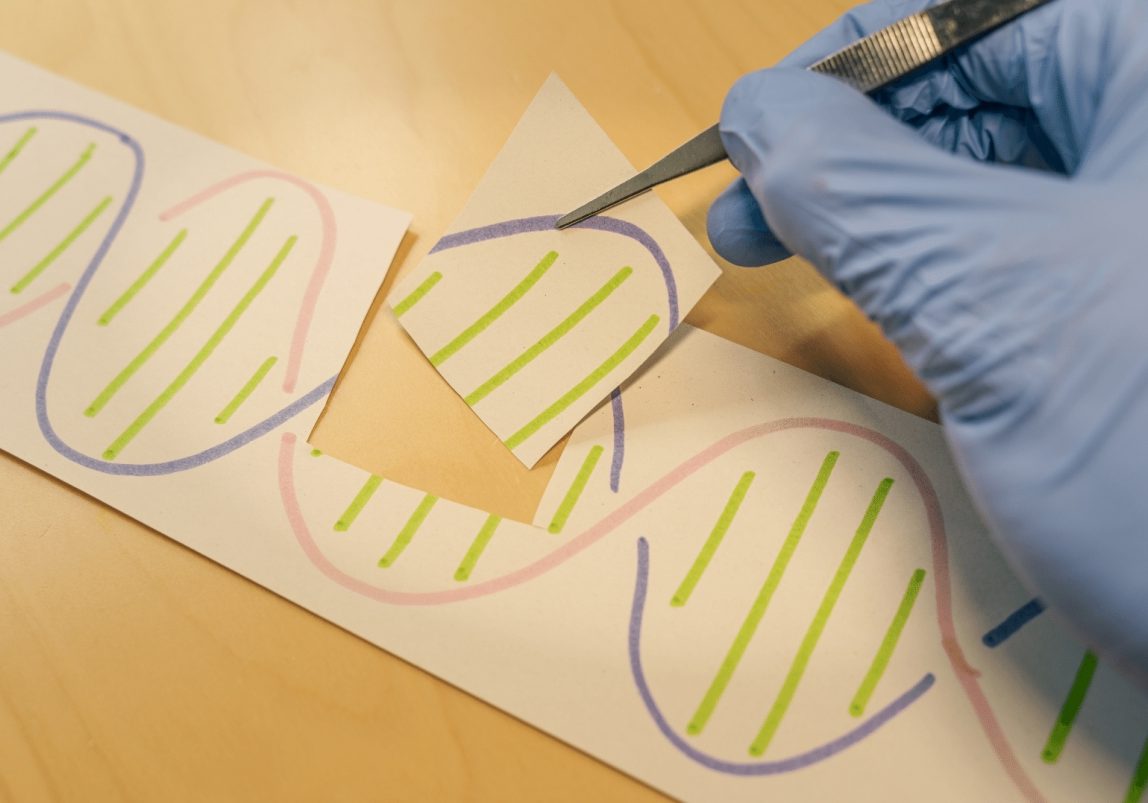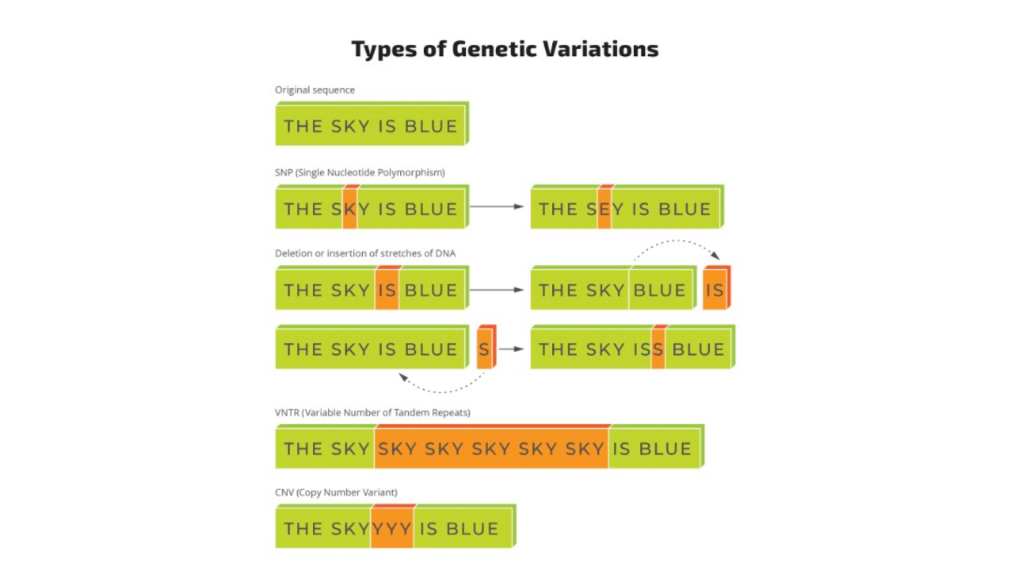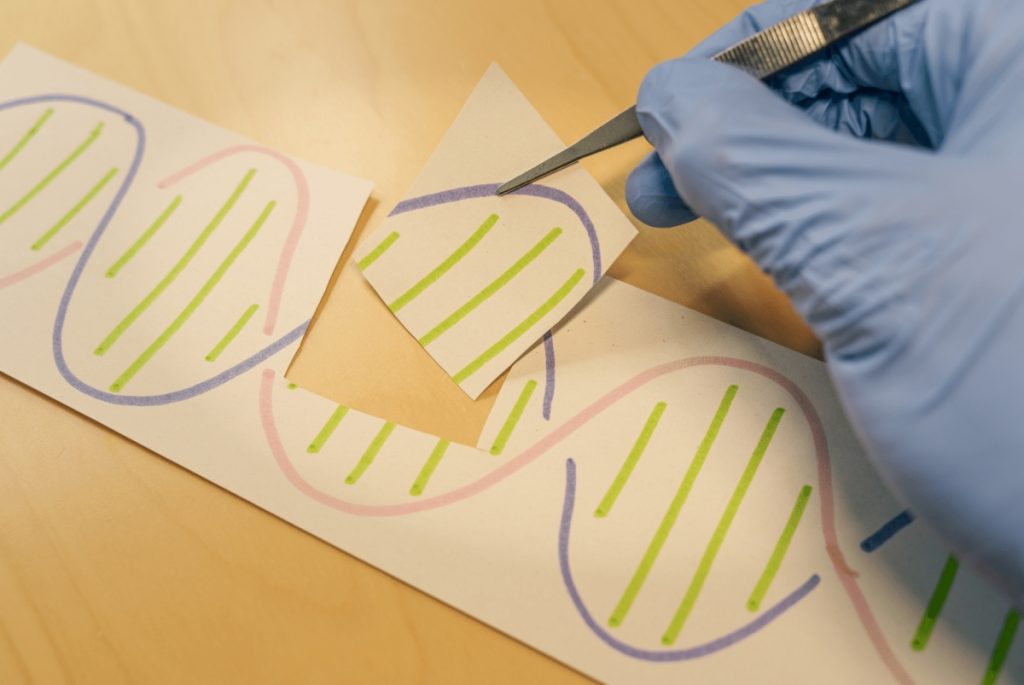Scientific Background and Glossary On Genetics and Nutrigenomics

Your genome is made of 46 pieces of DNA, each packaged into a chromosome. Each chromosome is like a long scroll of recipes encoded with 4 letters or base pairs, A, C, G, and T. Each part of this recipe is a gene. The sequence of these letters are called your genetic sequence. In total,…

Your genome is made of 46 pieces of DNA, each packaged into a chromosome. Each chromosome is like a long scroll of recipes encoded with 4 letters or base pairs, A, C, G, and T. Each part of this recipe is a gene. The sequence of these letters are called your genetic sequence. In total, combining all 46 chromosomes, your genome is about 3 billion letters long and encodes about 20,000 recipes or genes.
The 46 chromosomes come in pairs. 23 of them come from your father, the other 23 from your mother. One of the pairs is called sex chromosomes, which is XX if you’re biologically female and XY if you’re biologically male. This is why genetic variants come in two letters –you get one copy of each gene (and thus variants) from each of your parents. One exception to this is if you’re biologically male and the gene is on the X or Y chromosome, then you should only have one copy and one variant.
Genetic variation (also called variants, polymorphisms, or mutations) – The 0.1% genetic differences between two people who are not identical twins are genetic variations. These include the 3 million letters of differences.
What are mutations and are they bad?
“Mutations” usually have a bad connotation. There are good mutations, meaning they are beneficial for your health and there are bad mutations, meaning they could be negatively impacting your health. Our strategy is: become aware of the bad mutations and create a game plan to overcome the potential downside.
Most of these 3 million differences have very little to no effect on your health whatsoever. Whereas, a small subset of these either provide some benefit or harmful effect.
Now, here are some terminologies you may find in nutrigenomic reports and discussions.
Genotype refers to an individual’s genetic constitution. Sometimes, the term genotype refers to specific combinations of genetic variants within an individual.
Phenotypes are traits that result from the combined effects of your genetic, epigenetic, microbiome, and diet, lifestyle and environment. Phenotypes may be visible to the eyes or detectable with technologies, such as a blood test or an HRV response. This is what you have great control over.
An allele is a version of a gene, which may have one or more variations. Some genes can have multiple variations within them, and any specific combination of variations is called an allele.
If you are homozygous for a gene, that means you have two copies of the same allele. Whereas, if you are heterozygous, that means you have two different alleles of the same gene.
Types of Genetic Variations: SNPs, CNVs, Indels, and more
Your genes are like recipes embedded in the DNA strings of 4 different nucleotide bases: A, G, C, and T. The genetic sequence determines the gene products, such as enzymes and other proteins. Changes in the genetic sequence called “genetic variations” can affect the output of these gene recipes. Here are some of the most common types of genetic variations :
- Copy Number Variation (CNVs) refers to the variation of gene copy numbers or a stretch of DNA. The latter may also be called variable number tandem repeats.
- Single Nucleotide Polymorphism (SNPs) refers to the difference in one base pair of DNA within the population.
- Insertion/deletion (Indels) refers to the addition or subtraction, respectively, of DNA sequence. Indels can be of any size from one to thousands of base pairs.
Of these, SNPs are easiest to test for, so they are most often discussed. However, CNVs and Indels often have bigger biochemical impacts than SNPs because they are larger. Keep in mind that the research on how our genetic variations influence our metabolism and nutritional needs is still in its infancy. Also, your genes are static, but your life is dynamic. So gene-based advice needs to be taken in the context of your health status and current nutritional needs.

Impact of Genetic Variations
These three types of genetic variations can have one of the following impacts on your gene function:
- No impact – many genetic variants, especially SNPs, simply have no effect on the gene function.
- Reduction of function is the most common type of gene function change due to genetic variants
- Gain of function, such as by increasing protein production or protein activity
- Creation of new function or protein that functions in a completely different way
SUMMARY
Nutrigenomics is the study of how your genetic variants influence your body’s response to nutrition and lifestyle choices.
The purpose of this article and our Ultimate Nutrition System is to give you the tools you need to make up for your genetic weaknesses and thrive in spite of them.
However, it’s not as simple as just using genes to predict the best diet for you because of this equation:
Your Health, Aesthetics, and Performance =
Genetics + Epigenetics + Microbiome + Exposome
You have over 20,000 genes and 3 million genetic variants. Finding a variant responsible for your problem can be like finding a needle in a haystack.

Katrine Volynski, health researcher and nutrigenomic expert, uses the following steps:
Step 1: A very in-depth intake process that looks at:
- Symptoms
- Personality
- Environmental exposures
- Childhood history
- Food preferences
- Family history of health issues, especially on the maternal side since everyone gets their mitochondria from their mothers
Step 2: Lab tests to look at deeper-level phenotypes and biochemistry, such as:
- Organic acid test to look at how your body processes neurotransmitters and amino acids
- Micronutrient levels, such as with the Spectracell test
- Gut tests for infections, dysbiosis, inflammation, and leaky gut
Caveats of reading genes:
- Nutrigenomics is an emerging science
- Most nutrigenomic studies are “genome-wide association studies”
- Variants being associated with a phenotype may not cause the phenotype
- In humans, it’s very difficult to confirm that a gene causes a disease
- If you’re alive and functional, chances are that your genes aren’t very bad. If you truly have bad genes
- Unless you’re a geneticist, you should work with a practitioner who can put all of these pieces of information in context and help you determine what to do next
- Philibert, R. A., Terry, N., Erwin, C., Philibert, W. J., Beach, S. R. & Brody, G. H. (2014). Methylation array data can simultaneously identify individuals and convey protected health information: an unrecognized ethical concern. Clinical Epigenetics, 6(1), 28.




